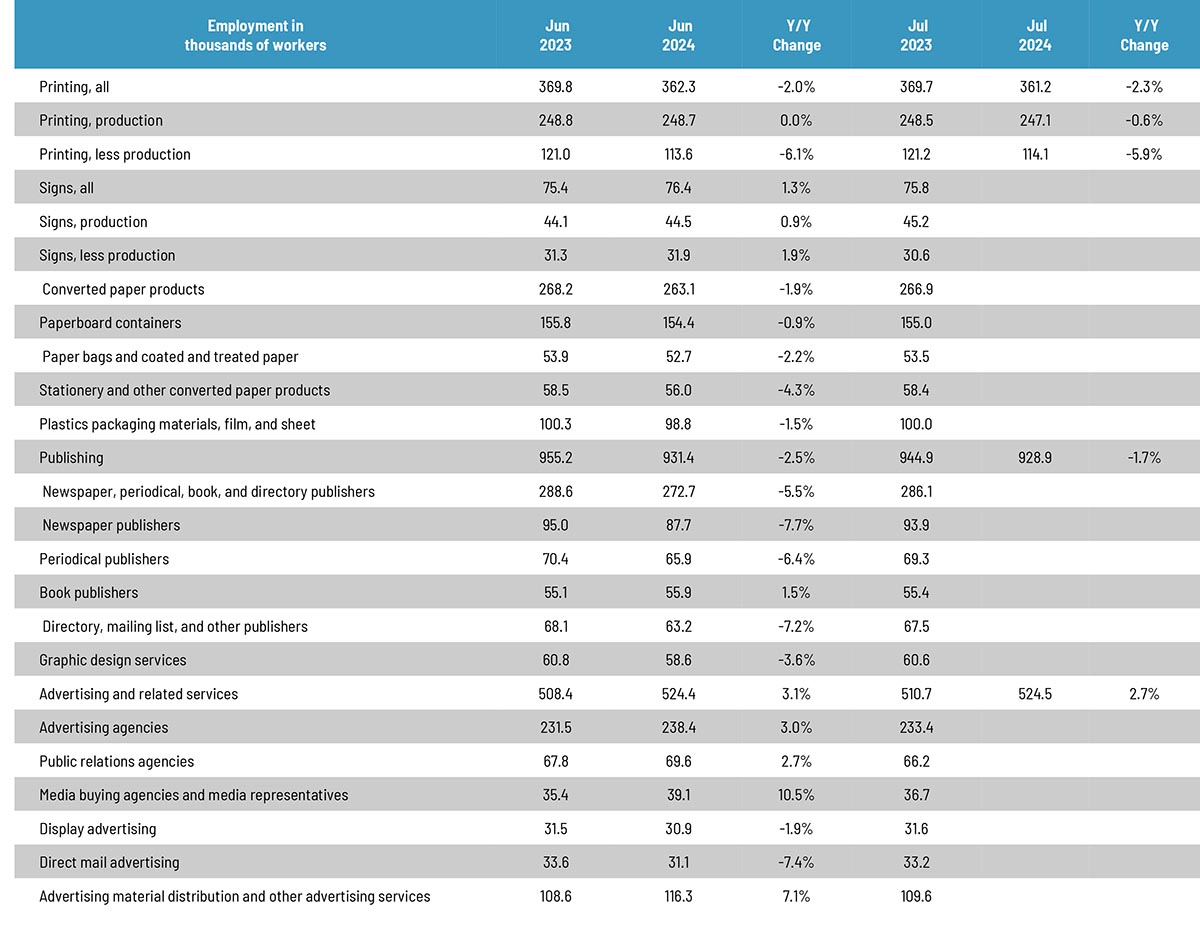
Overall printing employment in July 2024 was down slightly in July with production employment down 0.6% and non-production employment up 0.4%.

As we headed into summer, overall printing employment in June 2024 had been up ever so slightly from May, but dipped as we headed through July. Overall printing employment was down 0.3% in general, with production employment down 0.6% and non-production employment up 0.4%.
Overall publishing employment was down 0.3% from June to July, while advertising and related services was just about flat.
Looking at other business categories, the reporting of which lags a month:
Overall employment in the signage industry was down 0.8% from May to June, with sign production employment down 0.4% and non-production down 1.2%—a stark reversal from the previous month’s +2.2%.
Converted paper products employment was up 1.1% from May to June, with paperboard container employment up 1.6% and paper bags and coated and treated paper employment up 0.4%.
Looking at some specific publishing and creative segments, from May to June, periodical publishing employment was up 0.6%, while newspaper publishing employment was up a scant 0.1%, and book publishing was up 0.4%. Graphic design employment was down 0.2% from May to June, ad agency employment was up 0.5%, and PR agencies were down 0.7%. Direct mail advertising employment was unchanged.
As for July employment in general, the BLS reported on August 8 that total nonfarm payroll employment increased by 114,000 in July, and the unemployment rate ticked up to 4.3%. Job gains occurred in health care, in construction, and in transportation and warehousing.
Meanwhile, the change in total nonfarm payroll employment for May was revised down by 2,000, and the change for June was revised down by 27,000. Ergo, employment in May and June combined is 29,000 lower than previously reported.
The U-6 rate (the so-called “real” unemployment rate which includes not just those currently unemployed but also those who are underemployed, marginally attached to the workforce, and have given up looking for work) increased from 7.4% to 7.8%.
The labor force participation rate increased from 62.6% in June to 62.7% in July, and the employment-to-population ratio decreased from 60.1% to 60.0%. The labor force participation rate for 24–54-year-olds ticked up from 83.7% to 84.0%—the highest level since 2001.
The July report was below economists’ expectations. (We’re a little behind in looking at employment, but a sneak peek at the August numbers indicates that things get better.)











